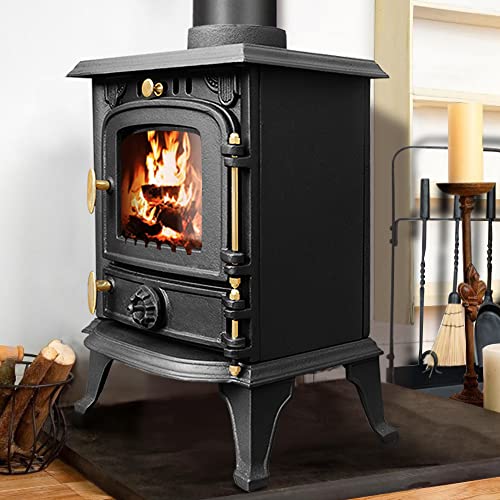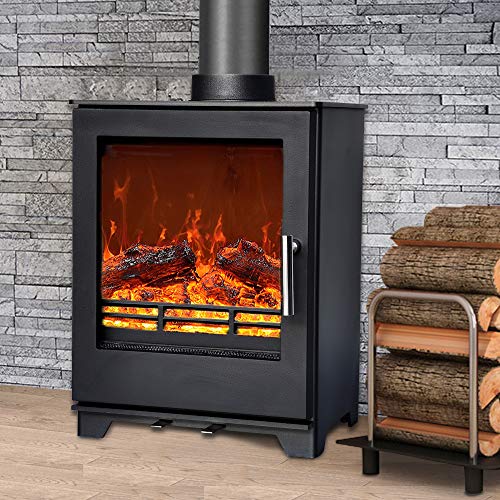Wood Burning Stove Explained In Fewer Than 140 Characters
작성자 정보
- Roma 작성
- 작성일
본문
wood burning stove fan Burning Stoves Near Me
 Wood stoves are a carbon-free renewable source of heat that can reduce energy costs. They also aid in active woodland management, which is beneficial to wildlife.
Wood stoves are a carbon-free renewable source of heat that can reduce energy costs. They also aid in active woodland management, which is beneficial to wildlife.
 If they are not installed and maintained properly they can create carbon monoxide, which poses health hazards for the entire family. To prevent this, look for an EPA-certified wood stove that has modern technology to ensure safe operation.
If they are not installed and maintained properly they can create carbon monoxide, which poses health hazards for the entire family. To prevent this, look for an EPA-certified wood stove that has modern technology to ensure safe operation.
Catalytic Stoves
A catalytic fireplace comes with a special catalyst, that looks like a honeycomb. It converts wood smoke into carbon dioxide. It is a good choice for those who want to cut down on indoor pollution and save money by burning less wood. They consume less fuel, burn faster, and produce less creosote. However, they are more expensive to operate than non-catalytic models and require regular maintenance of the combustion chamber.
Wood Stoves Certified by the EPA
The EPA requires that wood stoves are designed according to specific guidelines that restrict their emissions. According to these guidelines catalytic stoves should not emit more than 7.5 grams per hour. This compares to 4.1 grams per hour for an uncatalytic stove. It is important to keep in mind that lower emissions ratings don't mean more efficient heating.
Sizing and Selection
It is crucial that your wood multi burner stove is designed correctly for the home where it will be installed. The wrong size stove will not function as intended and may even overheat. Proper stove size increases heat output and reduces emissions. The brochure: Buying an EPA-Certified Wood Stove (PDF 530K) offers a simple method for sizing and selecting the right wood stove.
Non-Catalytical and Catalytic stoves
The first type of wood stove to be manufactured was the non-catalytic electric fire stove stove fireplace (linked site). They are also referred to as traditional wood burning stoves or open-fire stoves. The non-catalytic stove has the advantage that it does not require another combustion to lower emissions. However, a significant amount of energy that is wasted is lost as smoke. The smoke produced by non-catalytic stoves has a poisonous substance called creosote. The catalytic wood heater has eliminated these problems. The catalytic wood stove uses catalysts to burn the gases in the smoke and eliminates toxic creosote.
Although the catalytic wood stove was designed to reduce toxic emissions, it is not as efficient as the secondary burn system found in the non-catalytic stove. The catalyst does not completely burn the byproducts produced by burning wood and therefore still produces harmful emissions. The honeycomb structure may break down with time. This can result in an increase in performance and the need for replacement.
Maintain the Combustion Chamber Clean
A catalytic combustor that is operating properly will appear like a powdery gray. It must be free of soot, electric stove fireplace ash or other materials that could clog the cells and reduce the surface area of catalytic reactions. The combustor must not be subjected to flame impingement. This can happen when a strong, rapid draft pulls flames directly into a catalytic convertor. This can also happen when you leave the firebox and the ash pan doors open.
It is crucial to examine the catalytic combustion chamber on a regular basis for physical damage or the need to replace. If the catalytic combustor is damaged or needs to be replaced, it must be done as soon as is possible to ensure maximum performance.
 Wood stoves are a carbon-free renewable source of heat that can reduce energy costs. They also aid in active woodland management, which is beneficial to wildlife.
Wood stoves are a carbon-free renewable source of heat that can reduce energy costs. They also aid in active woodland management, which is beneficial to wildlife. If they are not installed and maintained properly they can create carbon monoxide, which poses health hazards for the entire family. To prevent this, look for an EPA-certified wood stove that has modern technology to ensure safe operation.
If they are not installed and maintained properly they can create carbon monoxide, which poses health hazards for the entire family. To prevent this, look for an EPA-certified wood stove that has modern technology to ensure safe operation.Catalytic Stoves
A catalytic fireplace comes with a special catalyst, that looks like a honeycomb. It converts wood smoke into carbon dioxide. It is a good choice for those who want to cut down on indoor pollution and save money by burning less wood. They consume less fuel, burn faster, and produce less creosote. However, they are more expensive to operate than non-catalytic models and require regular maintenance of the combustion chamber.
Wood Stoves Certified by the EPA
The EPA requires that wood stoves are designed according to specific guidelines that restrict their emissions. According to these guidelines catalytic stoves should not emit more than 7.5 grams per hour. This compares to 4.1 grams per hour for an uncatalytic stove. It is important to keep in mind that lower emissions ratings don't mean more efficient heating.
Sizing and Selection
It is crucial that your wood multi burner stove is designed correctly for the home where it will be installed. The wrong size stove will not function as intended and may even overheat. Proper stove size increases heat output and reduces emissions. The brochure: Buying an EPA-Certified Wood Stove (PDF 530K) offers a simple method for sizing and selecting the right wood stove.
Non-Catalytical and Catalytic stoves
The first type of wood stove to be manufactured was the non-catalytic electric fire stove stove fireplace (linked site). They are also referred to as traditional wood burning stoves or open-fire stoves. The non-catalytic stove has the advantage that it does not require another combustion to lower emissions. However, a significant amount of energy that is wasted is lost as smoke. The smoke produced by non-catalytic stoves has a poisonous substance called creosote. The catalytic wood heater has eliminated these problems. The catalytic wood stove uses catalysts to burn the gases in the smoke and eliminates toxic creosote.
Although the catalytic wood stove was designed to reduce toxic emissions, it is not as efficient as the secondary burn system found in the non-catalytic stove. The catalyst does not completely burn the byproducts produced by burning wood and therefore still produces harmful emissions. The honeycomb structure may break down with time. This can result in an increase in performance and the need for replacement.
Maintain the Combustion Chamber Clean
A catalytic combustor that is operating properly will appear like a powdery gray. It must be free of soot, electric stove fireplace ash or other materials that could clog the cells and reduce the surface area of catalytic reactions. The combustor must not be subjected to flame impingement. This can happen when a strong, rapid draft pulls flames directly into a catalytic convertor. This can also happen when you leave the firebox and the ash pan doors open.
It is crucial to examine the catalytic combustion chamber on a regular basis for physical damage or the need to replace. If the catalytic combustor is damaged or needs to be replaced, it must be done as soon as is possible to ensure maximum performance.
관련자료
-
이전작성일 2023.12.12 14:20
-
다음
댓글 0
등록된 댓글이 없습니다.
.png)






